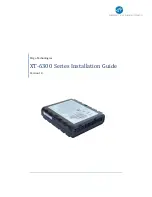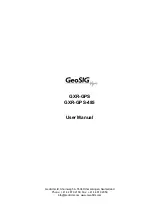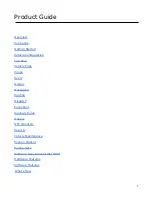
Understanding Sonar
The transducer mounted on your vessel transmits sound waves
toward the bottom of a lake, stream, or seabed in a cone-shaped
pattern. When a transmitted sound wave strikes an underwater
object—such as the bottom, a piece of structure, or a fish—sound is
reflected back to the transducer. The transducer collects the reflected
sound waves and sends the data to the GPSMAP 396 to be processed
and shown. The underwater data is shown on the Sonar screen in the
order that it is returned: first returned is the first on the screen.
Sonar Page
Generally speaking, if the only thing between the transducer and
the bottom is water, the first strong return comes from the bottom
directly below the transducer and sets the bottom level. Weaker
secondary returns provide the detailed data. Stronger returns screen
in darker colors, with red being the strongest return.
Understanding the Sonar Display
One of the first things to understand about sonar is that the
transducer sends a beam down to the bottom of the water, much like
the beam of a flashlight. The beam starts small near your vessel and
expands as it gets to the bottom. Refer to “Transducer Coverage” for
more detailed information.
The Sonar Page does not show a three-dimensional representation of
the underwater environment; the screen is in two-dimensions, much
like if you took a picture of an aquarium. Only the depth of the item
in the water is shown. The Sonar Page does not show you where an
item is located horizontally in the water, as shown in the drawings
below. The fish is not directly above the tree in reality, but it can
look like it is on the Sonar Page.
20'
10'
1'
Aerial View of the Water
Sonar Page
Fish
Tree
Tree
GPSMAP 396 Pilot’s Guide
143
S
ETTING
UP
AND
U
SING
S
ONAR
>
U
NDERSTANDING
S
ONAR














































